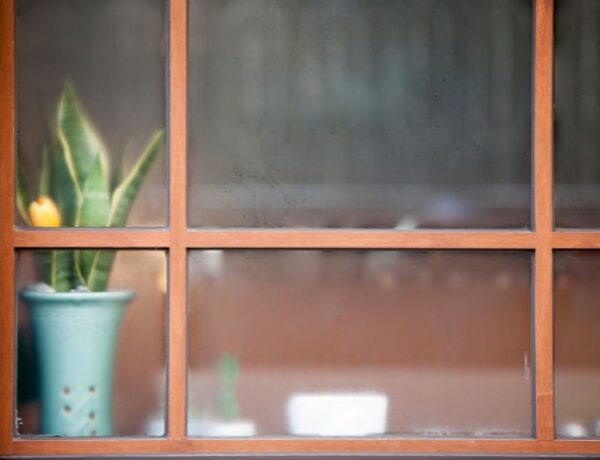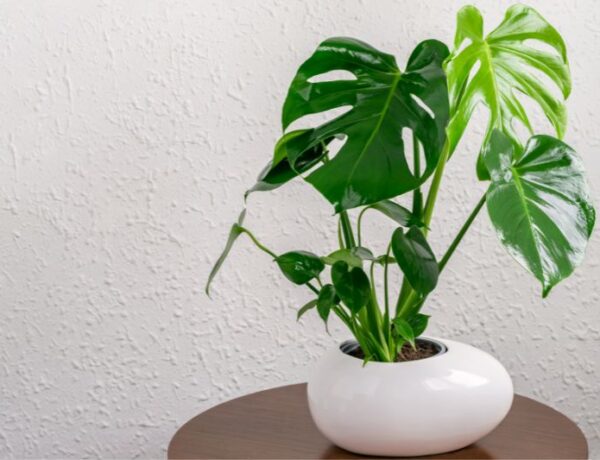Root rot is an unfortunate but common issue for indoor plants. It usually results from extended periods of overwatering or the presence of certain fungi in the soil. Both of these can lead to the decay of your plant’s root system, impacting its overall health and vigor.
In this article we’ll guide you through understanding what root rot looks like, along with how to treat and prevent it.
Table of Contents
Identifying Root Rot
The early signs of root rot can be difficult to spot as they primarily appear beneath the soil surface, right at the roots. However, the above-ground portions of your plant will start to display distress signals. You may notice that the leaves begin to lose their vibrancy, turning a dull yellow, and the entire plant may seem to wilt.
Now, if your plant exhibits these signs, it’s time to take a closer look. Carefully remove the plant from its pot and examine its roots. Root rot typically causes them to darken in color. Healthy roots often have a white or light tan color, while the affected parts may turn brown to black.
Their texture can provide further evidence of decay. Healthy roots should feel firm and pliable to the touch. In contrast, affected roots often become soft, mushy, and may even fall apart when handled. Usually, they emit a foul, musty smell.
Lastly, size and growth can also be indicators. Plants suffering from root rot might exhibit stunted growth, as the disease reduces the plant’s ability to absorb water and nutrients effectively.
The Main Causes of Root Rot
Root rot generally stems from two main sources: overwatering and fungal pathogens. Overwatering can lead to waterlogged conditions, depriving roots of essential oxygen and prompting their decay.
Additionally, certain soil-borne fungi, such as Pythium spp., Phytophthora spp., Rhizoctonia solani, and Fusarium spp., can attack the roots, especially in overwatered conditions.
How to Treat Root Rot Effectively
If the diagnose is root rot, you’ll have to act as soon as possible. Start by gently lifting the plant from its soil and rinse the roots under running water. Be sure to remove as much soil as possible.
Next, trim away all the decayed roots using a clean, sharp pair of scissors or shears. If the root rot is extensive, you may also need to prune back some of the plant’s leaves to reduce the burden on the plant as it regrows its root system.
Thoroughly clean the pot with a bleach solution and replace the old soil with fresh potting mix. If possible, treat the remaining healthy roots with a fungicide solution to kill off any lingering root rot fungi.
Tips and tricks for prevention
When dealing with root rot, prevention is indeed the best medicine. Purchase plants from trustworthy sources, ensuring they are free from disease. When potting, opt for a pasteurized commercial potting mix and a pot with good drainage. Adding organic material like peat moss to heavy potting mixes can also enhance drainage.
After dealing with this issue, sanitize your tools, surfaces, and pots with a bleach or detergent solution to prevent any cross-contamination. Last but not least, maintain a balance in watering – enough to sustain your plants without overdoing it.
Frequently Asked Questions About Root Rot
Yes, with prompt and proper treatment, many plants can recover from root rot. This usually involves removing the affected roots and soil, treating the remaining healthy roots with a fungicide, and repotting the plant in fresh, clean potting mix.
If left untreated, root rot will continue to damage the plant’s root system, hinder its ability to absorb water and nutrients, and eventually lead to the plant’s death.
Yes, the fungi causing root rot can spread to other plants, especially if they’re in the same pot or if tools used for an infected plant are used on healthy plants without proper sanitization.
It’s generally a good idea to discard soil that housed a plant with root rot, as it may contain the fungi that caused the disease. After removing the old soil, clean the pot thoroughly with a bleach solution before repotting with fresh potting mix.
While root rot can affect a wide range of indoor plants, those that are particularly susceptible include philodendrons, peace lilies, and various types of ferns. Also, plants that require a lot of water or have their roots sitting in water for too long are more prone to developing root rot.
Root rot can occur at any time of the year. However, it’s often more prevalent during colder months when plants are less active, and water doesn’t evaporate as quickly from the soil, leading to waterlogged conditions.
Yes, often, by simply improving your plant’s growing conditions – ensuring proper drainage, avoiding overwatering, and removing the affected roots – you can help your plant recover from root rot. However, in severe cases, using a commercial fungicide might be necessary to eliminate any lingering fungi.
Yes, overwatering alone can cause roots to become waterlogged and deprived of oxygen, which can lead to their decay.
Wrapping it Up
In conclusion, while root rot can pose a significant threat to your indoor plants, with vigilant observation, prompt action, and proper care, you can safeguard your plants from this disease. Understanding what root rot looks like is an important first step toward a healthier indoor garden.





No Comments